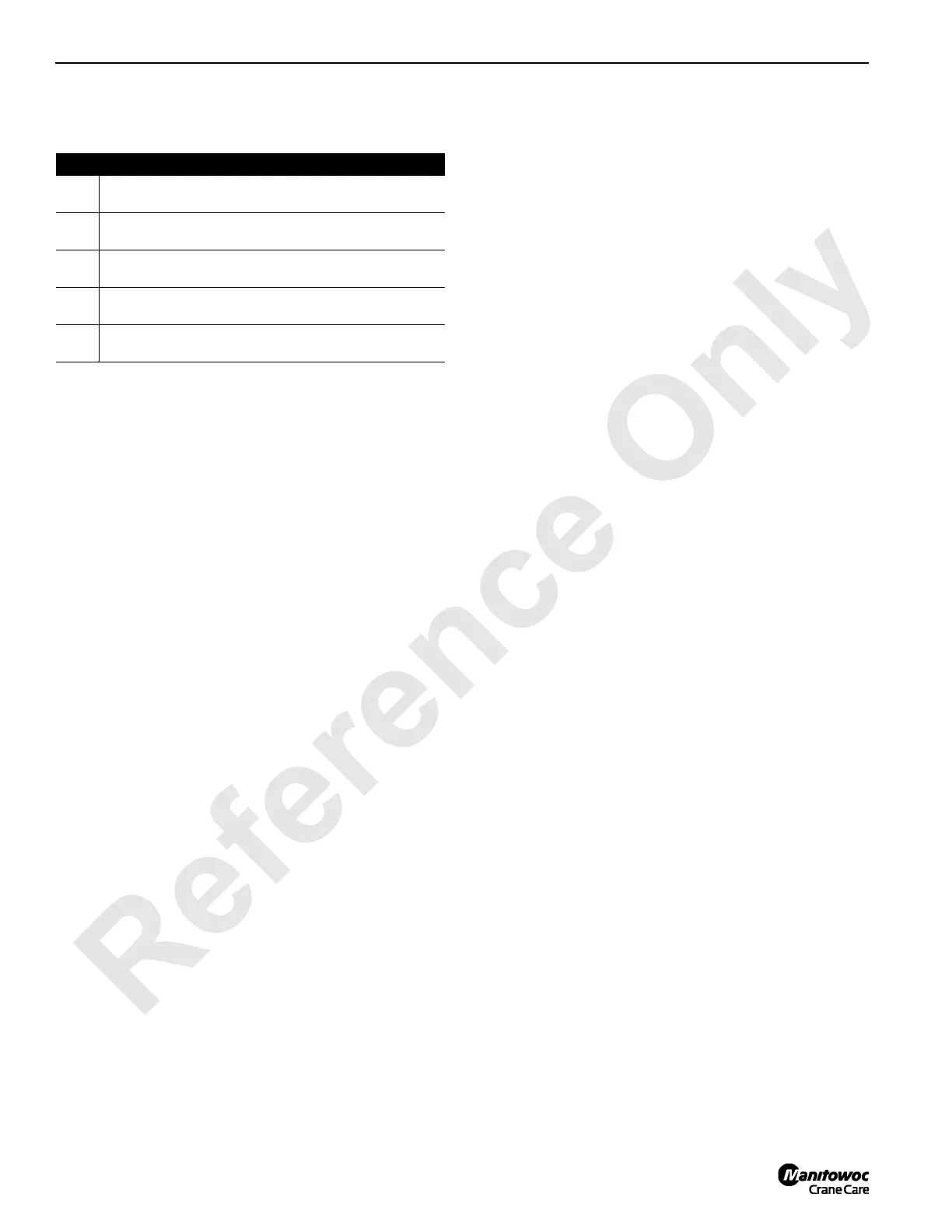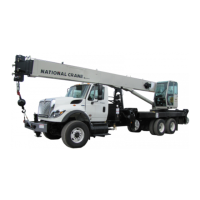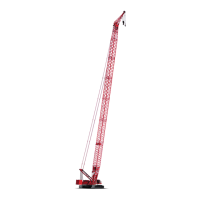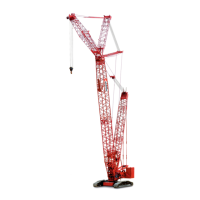HYDRAULIC SYSTEM 14000 SERVICE MANUAL
2-2
Published 09-05-14, Control # 226-02
Degradation Due to Extreme Environment
Table 2-1. Climate Zone Classification
Salt Environment
Hydraulic hose assemblies operating in salt water climates
could see a significant reduction in service life. Regularly
inspect hydraulic hose assemblies per Step 1.
Zone A and B
After 4,000 to 5,000 hours of service life, replace hydraulic
hose assemblies operating in these climate zones with high
ambient temperatures and high duty circuits. These hoses
could experience a service life reduced 40% to 50%.
Zone C
After 8,000 hours of service life, replace hydraulic hose
assemblies operating in this climate zone.
Zone D and E
Inspect hydraulic hose assemblies per Step 1. Cold
temperatures will negatively impact service life of hose
assemblies operating in these climate zones.
High Duty Circuits
High duty circuits can include, but are not limited to: hoist(s),
boom lift, swing, travel, pump suction and discharge to
directional valves, and directional valve return-to-reservoir.
Replace hoses on these circuits after 4,000 to 5,000 hours of
service life.
HYDRAULIC SYSTEM—MAINTENANCE
Safety
• Lower or securely block hydraulically operated
attachments and loads before servicing. Do not rely on
controls to support attachments or loads.
• Stop engine and relieve hydraulic pressure to zero
before servicing or disconnecting any part of hydraulic
system. After stopping engine, operate controls in both
directions to relieve pressure.
• Before servicing hydraulic system, attach warning sign
to engine start controls to warn other personnel not to
start engine.
• Do not perform hydraulic system maintenance,
adjustment or repair procedures unless authorized to do
so. And then, make sure all applicable instructions have
been read and are thoroughly understood.
• Do not alter specified pressure settings. Higher than
specified pressures can cause structural or hydraulic
failure. Lower than specified pressures can cause loss
of control.
• Never check for hydraulic leaks with hands. Oil under
pressure can penetrate skin, causing serious injury. Oil
escaping from a small hole can be nearly invisible;
check for leaks with a piece of cardboard or wood.
Storing and Handling Oil
• Store oil drums in clean, cool, dry location. Avoid
outdoor storage.
• Store oil drums on their side and cover them to prevent
water and dirt from collecting on them.
• When handling drums and transfer containers, use care
to avoid damage which can cause leaks and entry of dirt
or water into oil.
• Before opening a drum, carefully clean top of it. Also
clean faucet or pump to remove oil from drum.
• Only use clean transfer containers.
• Do not take oil from storage until oil is needed. If oil
cannot be used immediately, keep transfer container
tightly covered.
Zone Description
A
Tropical Moist: All months average above 65° F (18° C).
Latitude: 15° - 25° N & S
B
Dry or Arid: Deficient precipitation most of the year.
Latitude: 20° - 35° N & S
C
Moist Mid-Latitude: Temperate with mild winters.
Latitude: 30° - 50° N & S
D
Moist Mid-Latitude: Cold winters.
Latitude 50° - 70° N & S
E
Polar: Extremely cold winters and summers.
Latitude: 60° - 75° N & S

